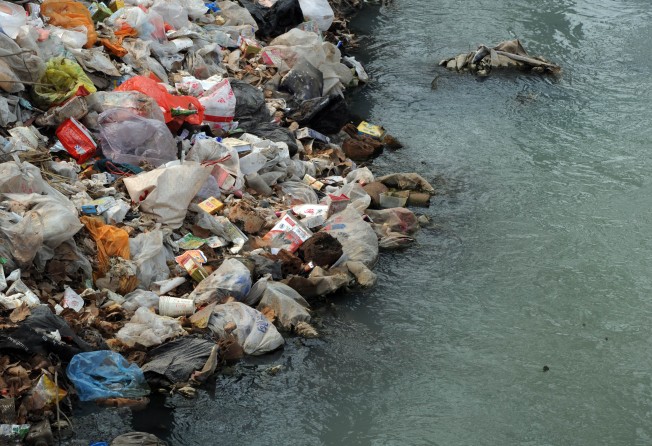
Shenzhen is losing its fight against pollution in main rivers
Despite spending billions of yuan since 2000, the city is losing its fight against water pollution

Residents of the Pearl River Delta have been shocked recently to hear reports that more than half of the waterways in Shenzhen, the most developed city in Guangdong, are black, polluted and smelly. This is despite 30 billion yuan (HK$38 billion) spent since 2000 on an official campaign to restore the city's long-suffering rivers.

The municipal Human Settlements and Environment Commission also reported that water quality at 121 sampling stations, covering 85 per cent of the city, was rated below Level 5 - or "extremely poor".
Under the grading system used by the mainland's environmental regulators, levels 1 to 3 mean water quality is suitable for drinking, aquaculture, fisheries and swimming. Water rated level 4 or 5 is suitable only for industrial use or irrigation.
And things have been getting worse. Pollution increased in several rivers this summer, including the Buji, Xinzhou, Guanlan and Shawan rivers, the Southern Metropolis News reported. The Buji is upstream from the Shenzhen River which forms the natural border with Hong Kong.
Even living close to the waterways is hazardous. "My family doesn't dare open our windows," said Li Li, who has lived in the Longhua New Zone near the Longhua River for years. "Our throats are sore, our eyes burn and our noses itch. And then there's the mosquitoes.
"Even though we complain more and more to the government, the rivers are gradually becoming darker, more foul and smellier."
The billions of yuan spent have failed to stem the deterioration. According to official figures, Shenzhen spent 4.7 billion yuan to battle water pollution in 2000-2005, 12 billion yuan in 2005-2010, and more than 12.8 billion yuan since 2011.
The authorities keep making promises - but revising their deadlines - to clean up the city's rivers. In 2005, the government pledged that rivers would recover from serious pollution within 10 years.
To achieve the goal, at least 90 per cent of the sewage collected inside the city was treated before being discharged by 2007.
The dark water and offensive odours were expected to disappear from the Shenzhen River and other waterways by then. By 2009, the government said the four main rivers - the Maozhou, Guanlan, Longgang and Pingshan - would be clean by 2015. Today, the four rivers remain the most polluted in the delta.
Almost a year ago, the government pledged 2 billion yuan to clean up the Maozhou River, the city's largest and one of the most heavily polluted parts of the Pearl River Delta, by next year. But major obstacles remain - levels of ammonia, phosphorus and nitrogen in the waterway are 23 times higher than those deemed safe for drinking.
Limited rainfall and rapid population growth, leading to large amounts of untreated sewage being discharged into rivers, are seen as the major contributing factors to the pollution, said Lan Jianhong, director of Shenzhen River Regulation Office.
"It's unfair to say that the authorities have made a huge investment with no progress. Most of the water pollution funds have been used to build sewage collection and treatment works. Both projects take time and money," Lan said.
"Shenzhen's rivers were clean until the 1990s, when it was still more a fishing village than a city of more than 15 million people."
"In the past decade, Shenzhen has built 33 modern sewage treatment plants across the city. The problem is the lack of sewage pipelines to collect wastewater for treatment."
According to local media, Shenzhen has laid almost 4,300km of sewage pipes but 4,600km more is still needed. About 930,000 tonnes of untreated wastewater is discharged into rivers every day.